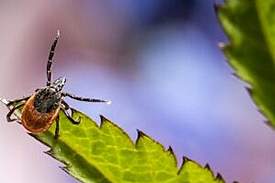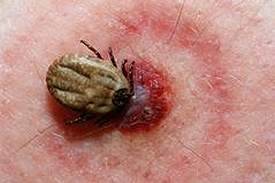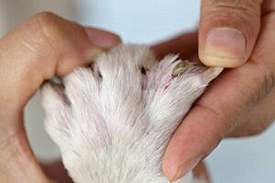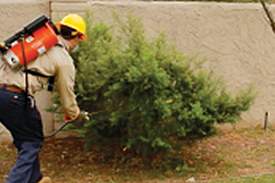Quick Facts Ticks

CORKY’S TICK CONTROL SERVICE
Unlike many other biting pests, ticks are adapted to feed for long periods of time. They bury their curved fishhook-like teeth deeply into the skin of a host so they can remain securely attached for days on end eating. It’s important to understand that ticks typically require 24-48 hours of feeding before they can successfully transmit infections like Lyme disease, therefor prompt removal is crucial. With all the types of diseases carried and transmitted by these little suckers, it’s just a matter of time before a bite becomes deadly. Tick, tick, tick….TOCK!
Ticks don’t jump or fly, they crawl up low brush or grass to find a host. Then, they clasp on with their back legs and wave their front legs up in the air to grab onto a passing animal or human.



This process is called questing. Sometimes, they even drop from a high perch and free fall onto a passing “meal”. Once a tick has had it’s fill (which can take several days) they will drop off their host and crawl to the nearest safe shelter to lay their eggs. A single female can lay over 3 thousand eggs in her lifetime (2-3 years).
These mini, vampires… want to suck your blood! Ticks require blood to sustain life. Their choice of hosts often depends on what’s available, but most do have a preference. For example, the Blacklegged tick (carrier of Lyme Disease) prefers the blood of the white- tailed deer but will also feed on mice, other red-blooded wildlife, small birds and humans. Here in Southern California, the most prevalent ticks are: the American Dog Tick, the Brown Dog Tick, the Pacific Coast Tick, and the Blacklegged Tick (aka, Deer Tick). All of these ticks will feed off rodents, squirrels and other small animals in their infant stages then progress to larger animals as adults. All the mentioned ticks will feed upon humans and they all have their own assortment of pathogens.to pass on while feeding. Other species of ticks do inhabit California but not in abundance.
Ticks are opportunistic, ambush hunters. They live and hunt where food is readily available, ambushing their prey along walking or migration paths, and letting their hosts provide them with transportation to new feeding grounds. Ticks do have natural enemies such as, ground-feeding birds, certain beetles, ants, and spiders. But none of these could ever eat enough to eradicate a whole tick population on a property.
If you have done all you can to make your property unwelcoming to ticks, by cutting tall grasses, thinning bushes and shrubs, mowing lawns, removing anything that could hide ticks, and creating a tick free zone between your property and wooded areas, but are still experiencing ticks, call in the professionals.
Corky’s Pest Control, has a 2-STEP Tick Control Service that will get rid of existing infestations. Consider Corky’s year-round Ultimate Pest Control Service, (for ants and spiders) it includes tick control and much more. Interior services are rarely necessary but when they are, they also require a 2-step treatment process.



Here is what we do:
- Two treatments are preformed 14 days apart. Each treatment includes spraying the property perimeters and all suspected tick infested areas.
- Additional treatments are charged per application unless you’re on our Ultimate Pest Control Service, plan.
- It’s unusual for ticks to infest inside your home although they can be brought in on clothing or by pets. Inside areas will be treated at no additional charge.
Protect family, friends and pets from ticks by calling Corkys at 1-800-901-1102 or order a service online at Corkyspest.com


- Don’t squeeze, twist or squash it. Don’t burn it with a match or cover it with Vaseline.
- Use fine-point tweezers or a special tick-removing tool. Grasp the tick as close to the skin as possible.
- If you don’t have tweezers protect your fingers with a tissue.
- Pull the tick straight out with steady, even pressure, do not twist.
- Disinfect the bite area and wash your hands.
 800-901-1102
800-901-1102